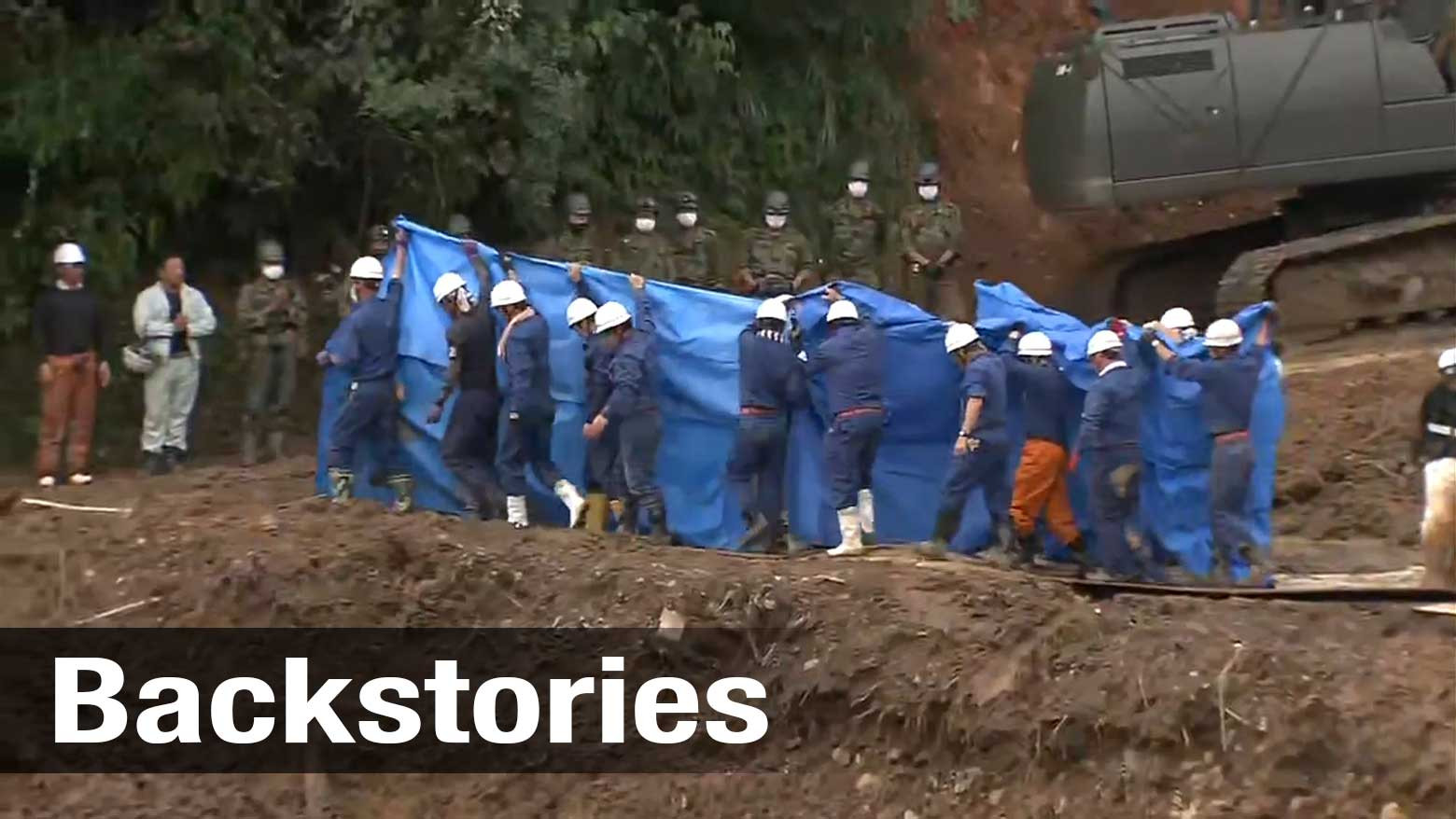Fourteen people at a nursing home in Kuma Village were killed after the nearby Kuma River flooded. One frequent visitor to the facility, 86-year-old Yokota Satsuko, was there on the day of the disaster and spoke to NHK about her experiences.
Yokota says that on July 3, the day before a heavy rain emergency warning was issued for the area, staff from the nursing home contacted her and told her she could spend the night at the facility. She went over and slept on the first floor. At around 6 AM, staff members came to wake her up.
“I was fast asleep so I didn’t know it was even raining,” Yokota says. “I thought I would spend the night and then go home during the day. But the staff came in the morning and said we had to go upstairs.”
Floodwaters had almost reached the facility. Nurses helped Yokota move to the roof, where she laid on tatami mats with other residents and elderly people. They had to wait until nighttime before rescuers arrived on the scene.
“I was very frightened. The water and the mud had almost reached the second floor. I don’t know what I’ll do now. My house was flooded.”
The torrential rain caused not only flooding but also landslides in many areas, including Ashikita Town, Kumamoto Prefecture, where three people were killed.
Sakamoto Meiji is the leader of a volunteer group that works to prepare the community for disasters. But he says that by the time an evacuation order was issued just before dawn on July 4, the nearby river had already overflowed.
“It was difficult to move people out so late at night,” he says. “I realize the entire community should have been evacuated during the day, even if there was no risk at that point.”

As of Sunday, access to 16 communities in five municipalities remained blocked. In the Tsukigi district of Taragi Town, about 60 households remain cut off from the rest of the community.
“I’m most worried about the health of our residents, since there’s no doctor for them to turn to,” district chief Shiiba Kesashi told NHK over the phone. “Many of them are elderly and might be affected by back pain, aching feet, and other health issues. I want the road to be reopened to traffic as soon as possible.”

Nearly 14,000 houses have been flooded or damaged across the country, mostly in Kyushu. Officials say the number may rise as they get a more complete picture of the destruction.
Workers began building temporary housing on Saturday in Hitoyoshi City, Kumamoto Prefecture, where flooding is believed to have damaged more than 3,700 homes. The prefectural government says it plans to build 40 housing units in Hitoyoshi and Yamae Village, and hopes to have people move in by mid-August.
Volunteers are also helping residents get back on their feet. But their work has been hampered by the continuing rain and concerns over the coronavirus. The city volunteer center in Hitoyoshi is currently only accepting people who live in the prefecture.

Japan’s disaster management minister, Takeda Ryota, said in an NHK program on Sunday that volunteers are needed to help remove mud and debris from flooded homes, but very few people have stepped up so far due to worries about the coronavirus.
“Officials have to think of ways to recruit volunteers,” he said, “while also taking measures to prevent the spread of infection."

